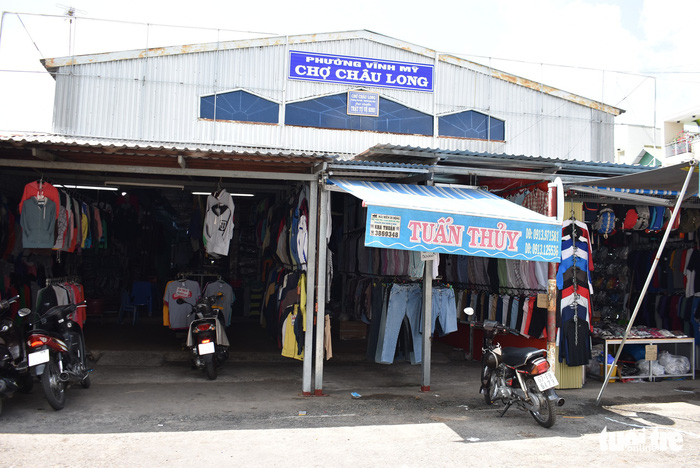Traders at a long-standing market selling second-hand clothes in southern Vietnam are feeling concerned for their own business as local authorities have plans to forbid the sale of this type of goods in a bid to combat smuggling.
The Chau Long Market, which has been frequented by buyers of inexpensive second-hand clothes for over two decades, is now facing a crucial transformation.
The market is a parade of over 100 used clothing booths located in the rural area in Vinh My District of Chau Doc, the capital city of An Giang Province, which is contiguous with Cambodia.
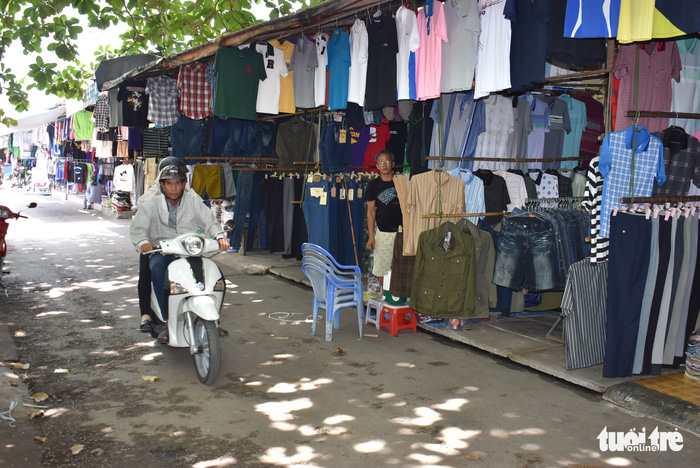 |
| A motorcycle drives past booths at the Chau Long Market in An Giang Province, southern Vietnam. Photo: Tuoi Tre |
“The Chau Doc administration will order the Vinh My authorities to persuade vendors at the market to gradually stop selling imported used clothes and switch to other kinds of items,” Tran Quoc Tuan, the city’s deputy chairman, told Tuoi Tre (Youth) newspaper on Thursday.
Tuan said the move is aimed at preventing illegal importation of foreign clothes into Vietnam, adding that the imposition of the ban will follow a concrete plan which allows for transitional stages.
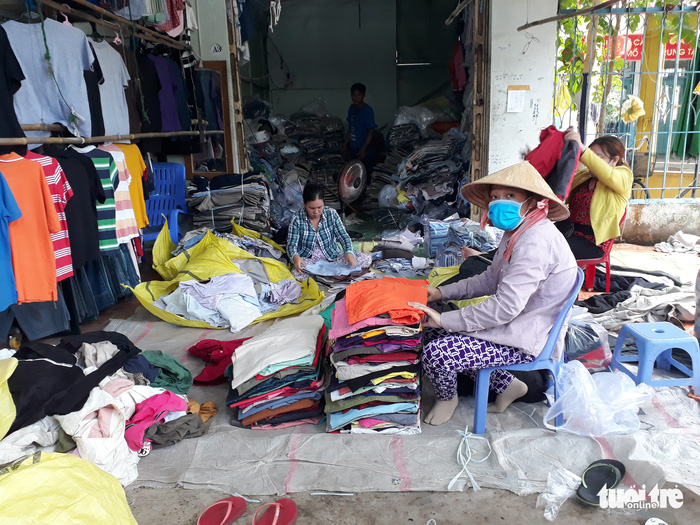 |
| Women fold up clothes at the Chau Long Market in An Giang Province, southern Vietnam. Photo: Tuoi Tre |
It has not been known how much clothing here comes from abroad, especially Cambodia, but Huynh Van Mien, the market’s manager, said all the products on sale consist of clothes bought in Ho Chi Minh City and those which were confiscated and auctioned by Vietnamese market surveillance authorities.
Smuggling, particularly in tobacco, is common in An Giang partly because the Mekong Delta province shares with Cambodia a 100-kilometer-long border along which a number of inland waterways, paths and rice paddies run.
Multiple local sellers at the market said that a forced disappearance of second-hand clothing items here is likely to catapult hundreds of families and thousands of poverty-stricken residents around the location into difficulty.
Customers here are mainly poor workers, who can only afford a shirt or a pair of trousers at just VND10,000-20,000 (US$0.5-0.9), according to Nguyen Hoang Phuc, 73-year-old vendor at the Chau Long Market.
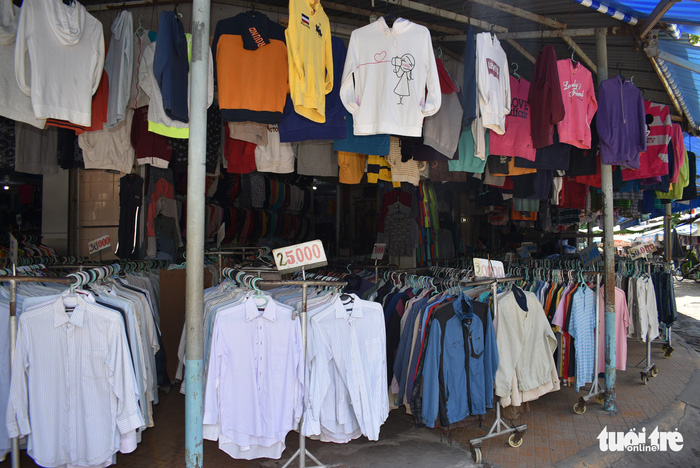 |
| Clothes hang for sale at the Chau Long Market in An Giang Province, southern Vietnam. Photo: Tuoi Tre |
D., another seller, said his sale activity at the place has been in the doldrums, with him only vending under five kilograms of clothing in several recent months.
He argued against the government’s decision, citing the marketplace’s benefits in a time when clothes made by domestic companies are priced unreasonably.
“If the market is gone, where will visitors to the Sam Mountain buy souvenirs?” he said, referring to An Giang’s well-known tourist attraction of many sacred temples and national historical relics, sitting around eight kilometers away.
“It additionally provides clothes as relief to areas struck by flooding in central Vietnam. If it’s gone, the locals’ livelihood will be at stake,” he added.
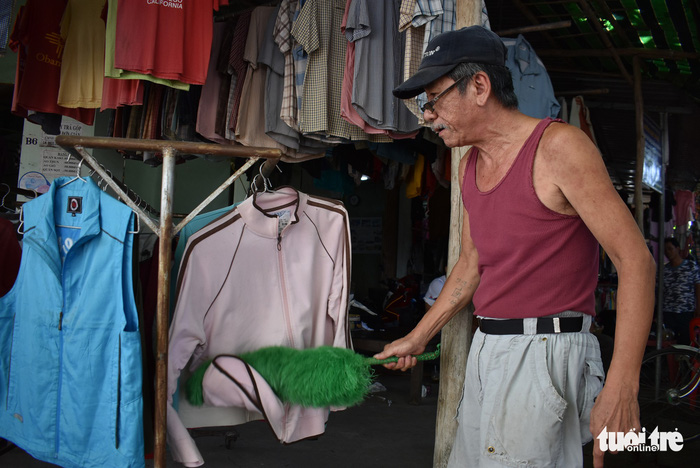 |
| Nguyen Hoang Phuc removes dust from a shirt at his shop in the Chau Long Market in An Giang Province, southern Vietnam. Photo: Tuoi Tre |
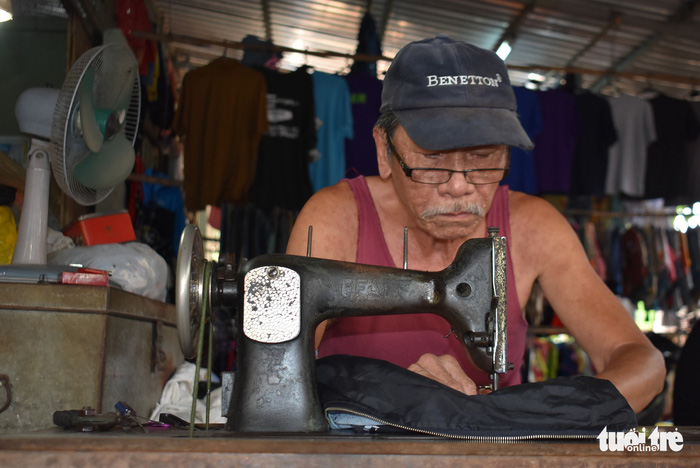 |
| Nguyen Hoang Phuc works at a treadle sewing machine at his shop in the Chau Long Market in An Giang Province, southern Vietnam. Photo: Tuoi Tre |
The Chau Long Market manager, Mien, said that local administrators should help the sellers in the shift from second-hand clothes to other types of merchandise, as the vendors may encounter multiple problems during the process.
Mien underlined that though called secondhand, clothes at the market are very durable.
“Take the shirt and trousers I’m wearing. They cost no more than VND50,000 [US$2.2],” he said.
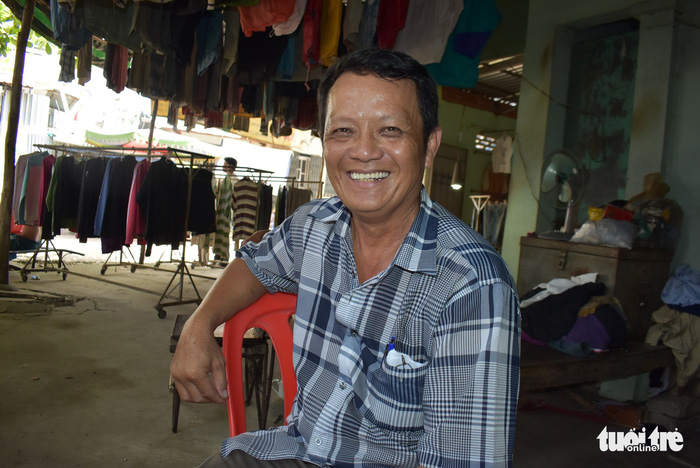 |
| Huynh Van Mien poses for photos while wearing a secondhand shirt which he says fetches under VND50,000 (US$2.2), at the Chau Long Market in An Giang Province, southern Vietnam. Photo: Tuoi Tre |
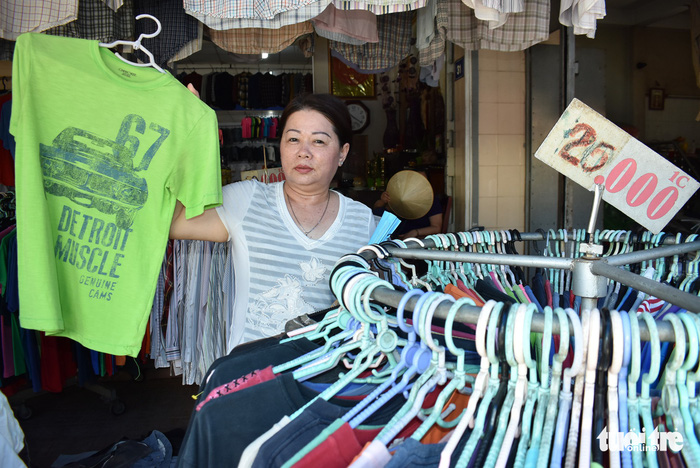 |
| A woman hangs a shirt at the Chau Long Market in An Giang Province, southern Vietnam. Photo: Tuoi Tre |
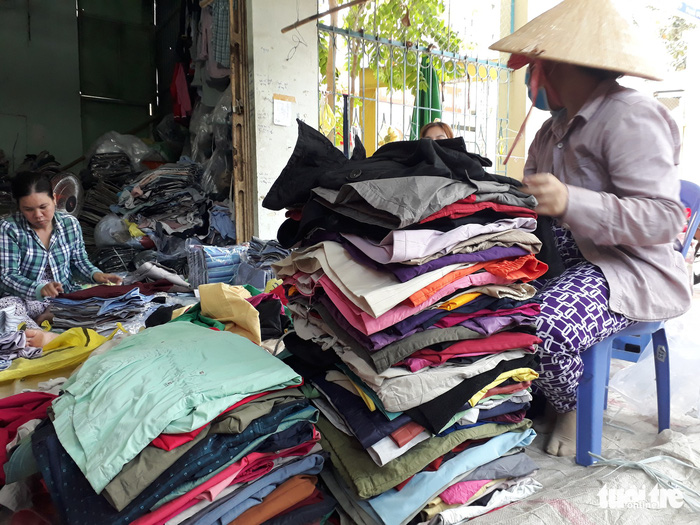 |
| Women fold up clothes at the Chau Long Market in An Giang Province, southern Vietnam. Photo: Tuoi Tre |
Like us on Facebook or follow us on Twitter to get the latest news about Vietnam!



